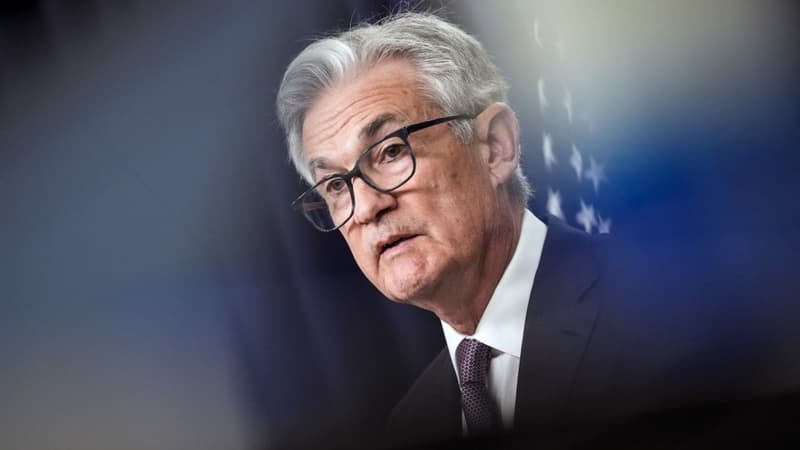The US central bank (Fed) raised its main reference rate by a quarter of a point on Wednesday, an eighth consecutive rise less pronounced than the previous ones, and forecasts new increases, noting that “inflation has slowed down a bit but is holding up” . high.
In addition, “recent indicators show moderate growth in spending and production,” officials from the monetary institution said. But Fed Chairman Jerome Powell said he wanted “more evidence” that inflation is slowing “sustainably.” In other words, the situation is improving, but it is too early to claim victory.
With this eighth consecutive rise, the Fed rates, which were at zero just a year ago, are now in a range of 4.50 to 4.75%, after a unanimous decision. This increase of a quarter of a percentage point, however, represents a return to a more usual level of rise, after particularly strong rises of half a point and even three quarters of a point. The objective of the rate hikes: push banks to raise interest rates on loans to homes and businesses.
In order to try to curb inflation, which in June had reached its highest level in more than 40 years, it was necessary to curb consumption to prevent prices from continuing their dizzying rise. But with consumption driving the US economy, too much adjustment could lead to a recession. For Pierre-Olivier Gourinchas, chief economist at the International Monetary Fund (IMF), which published new forecasts on Tuesday, there is still “a slim chance” that this scenario will be avoided.
solid job market
The state of the labor market, in particular, is being closely watched by the Fed, after two years of worker shortages that pushed up wages amid high inflation. The official employment figures for January will be released on Friday. The unemployment rate is expected to increase slightly, to 3.6%, a level that, however, remains among the lowest in the last 50 years. The number of job creations is expected to decline to 187,000 from 235,000 in December, according to the Briefing.com consensus.
In January, flooding in California and heavy snowfall in several states slowed job creation in the private sector, according to the monthly ADP/Stanford Lab survey released Wednesday. But “we see a still strong labor market,” said ADP chief economist Nela Richardson. As for salaries, they show a stable increase compared to December.
Another figure, released Tuesday morning by the Labor Department, seemed to persuade economists that inflation is now permanently on the right track: the average cost of an employee, with a fourth-quarter rise less strong than the of the previous quarters. . The rise in consumer prices thus fell in December to 5.0% annual compared to 5.5% the previous month, according to the PCE index, favored by the Fed, which wants to bring it back to around 2%.
Another measure of inflation, the CPI index, against which pensions are indexed, also slowed sharply in December, to 6.5% annually from 7.1%. On Thursday it is the ECB that will meet. The European institution began to raise its rates later than the Fed, and it should raise them again, and even suggest new increases.
Source: BFM TV


